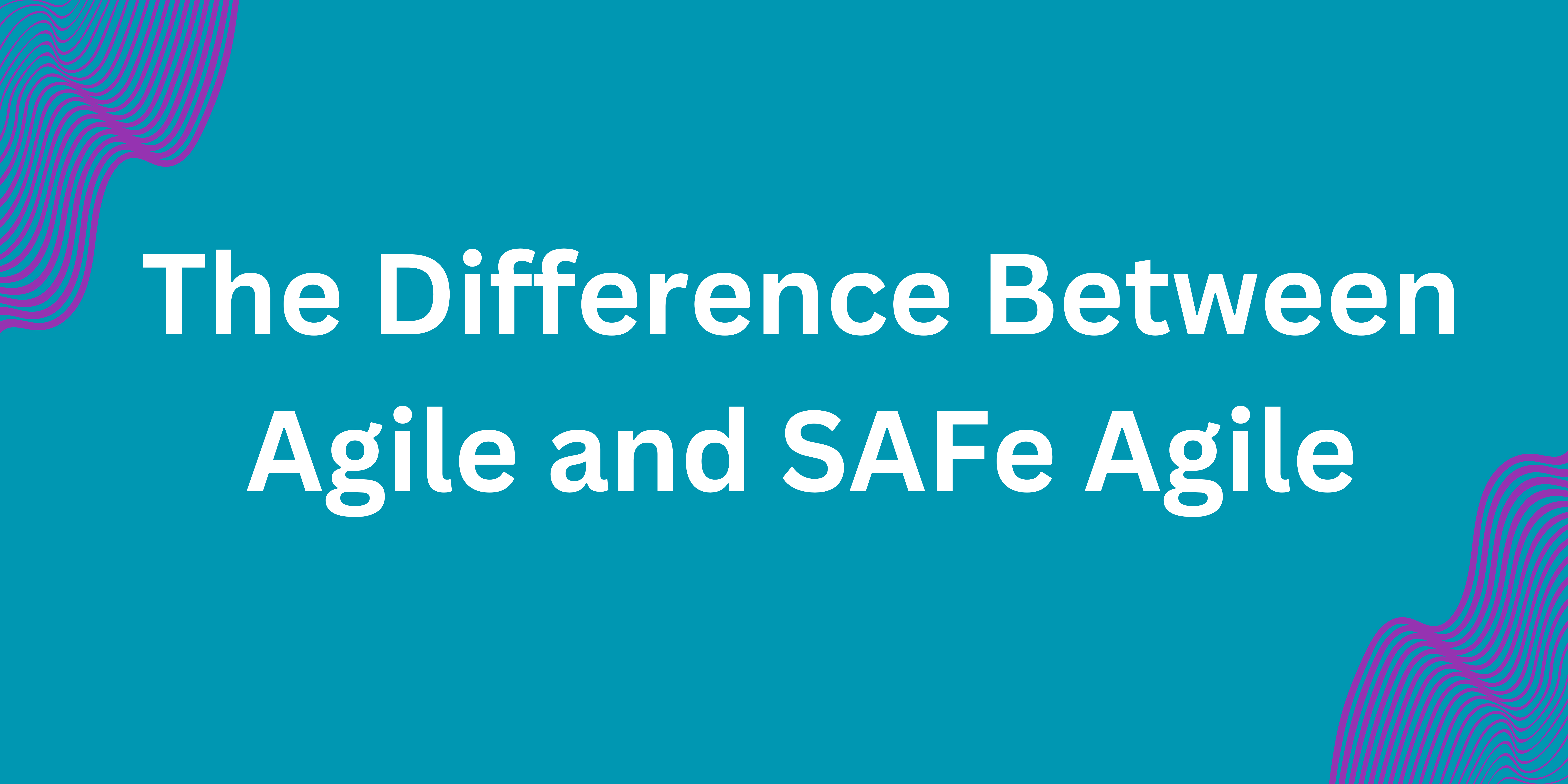05 NOV 2024
By AxiGlobe

Agile methodologies have revolutionized the way organizations approach software development, focusing on flexibility, collaboration, and delivering customer value. Over time, various frameworks have emerged within the Agile umbrella to suit different team sizes, project complexities, and organizational needs. Two of the most widely adopted approaches are Agile and SAFe Agile (Scaled Agile Framework). While both aim to improve agility, they differ in their scope, implementation, and focus.
In this blog, we’ll explore the key differences between Agile and SAFe Agile, helping you understand when and how each framework might be the best fit for your organization.
Agile is a broad set of principles and values defined by the Agile Manifesto, which was created in 2001 by a group of software developers who sought to improve the way software was developed. The manifesto emphasizes the following key principles:
Individuals and interactions over processes and tools
Working software over comprehensive documentation
Customer collaboration over contract negotiation
Responding to change over following a plan
Agile methodologies encourage iterative development, where work is broken into small increments (often called sprints or iterations) and feedback from customers and stakeholders is continuously integrated into the product.
Popular Agile methodologies include:
SAFe (Scaled Agile Framework) is a specific methodology designed to scale Agile practices across large enterprises. While Agile works well for individual teams, SAFe provides a structured approach to implement Agile at scale, across multiple teams, departments, or even entire organizations.
SAFe was created by Dean Leffingwell and incorporates principles from Agile, Lean, and product development flow. The goal of SAFe is to provide an overarching framework that ensures alignment, collaboration, and delivery across large organizations, all while maintaining the core Agile principles of iterative development and customer-centric value delivery.
SAFe introduces several new concepts not found in traditional Agile methodologies, such as Program Increment (PI) planning, Roles (e.g., Release Train Engineer, Product Owner, and Solution Architect), and a multi-level hierarchy that addresses the needs of different levels within the organization.
SAFe has four key levels:
Use Agile When:
Use SAFe Agile When:
Benefits of Agile:
Benefits of SAFe Agile:
In summary, Agile and SAFe Agile are both frameworks that enable organizations to deliver value quickly and efficiently, but they differ in terms of scope, complexity, and scale. Agile works best for small, self-organizing teams focused on iterative development and customer feedback. On the other hand, SAFe Agile is designed for larger enterprises that need to scale Agile across multiple teams and departments while ensuring alignment, governance, and coordination.
Choosing the right approach depends on your organization's size, complexity, and the need for alignment across teams. If you’re a small company or team, Agile may be sufficient to deliver value quickly. But if you’re part of a larger organization with complex projects and dependencies, SAFe Agile can help you streamline processes, coordinate efforts, and deliver on a larger scale.
No matter the framework, both Agile and SAFe Agile ultimately aim to increase collaboration, efficiency, and the ability to respond to change — helping you deliver the best possible product to your customers.
Oh! We recently winded up one batch, but no worries. We have a few more in the coming weeks.
Just opt-in for the updates about dates, prices, and curriculum with your preferences!
We keep you posted about the course.
©️2020 - 2025 AxiGlobe All Rights Reserved. The certification names are the trademarks of the respective authorised bodies
 USA
USA
Disclaimer :
Profession Scrum Master (PSM-I®, PSM-II®, PSM-III®), Profession Scrum Product Owner (PSPO-I®, PSPO-II®, PSPO-III®), Profession Scrum Developer (PSD-I®), Scaled Professional Scrum(SPS®),Professional Scrum With Kanban(PSK-I®) , Prove your knowledge of Professional Agile Leadership(PAL-I®), Prove your knowledge of Evidence-Based Management™ (PAL-EBM®), Prove Your Scrum with User Experience Knowledge
(PSU-I®) and Professional Scrum Trainer(PST®) are registered trademarks of Scrum.org®. AxiGlobe INC is a Professional Training Network member of Scrum.org®.
Certified Business Analysis Professional (CBAP®), Certification of Capability in Business Analysis(CCBA®), Entry Certificate in Business Analysis(ECBA®), Agile Analysis Certification(AAC®), Certification in Business Data Analytics(CBDA®), Certificate in Cybersecurity Analysis(CCA®), Certificate in Product Ownership Analysis(CPOA®) are registered trademarks of International Institute of Business Analysis(IIBA®). AxiGlobe INC is an Premier Level Endorsed Education Provider of IIBA®.
SAFe Agilist Certification (SA®), SAFe Program Consultant Certification (SPC®),SAFe Program Consultant Trainer Certification (SPCT®),SAFe Practitioner Certification(SP®),SAFe Release Train Engineer Certification (RTE®),SAFe Scrum Master Certification (SSM®),SAFe Advanced Scrum Master Certification (SASM®),SAFe DevOps Practitioner Certification(SDP®),Agile Product Manager Certification (APM®),Lean Portfolio Manager Certification (LPM®),Product Owner / Product Manager Certification (POPM®),SAFe Architect Certification (ARCH®),Agile Software Engineer Certification (ASE®) and SAFe Government Practitioner Certification (SGP®), Scaled Agile Framework® and SAFe® are registered trademarks of Scaled Agile, Inc.®. AxiGlobe INC is a Silver Partner of Scaled Agile, Inc®.
DevOps Foundation®, DevOps Leader®, SRE Foundation℠, SRE Practitioner℠, DevSecOps Foundation℠, Continuous Testing Foundation℠, Certified Agile Service Manager®, Continuous Delivery Ecosystem Foundation℠ and Value Stream Management Foundation® are registered trademarks of DevOps Institute. AxiGlobe INC is a Registered Education Partner (REP) of the DevOps Institute (DOI) ®. Read more...
